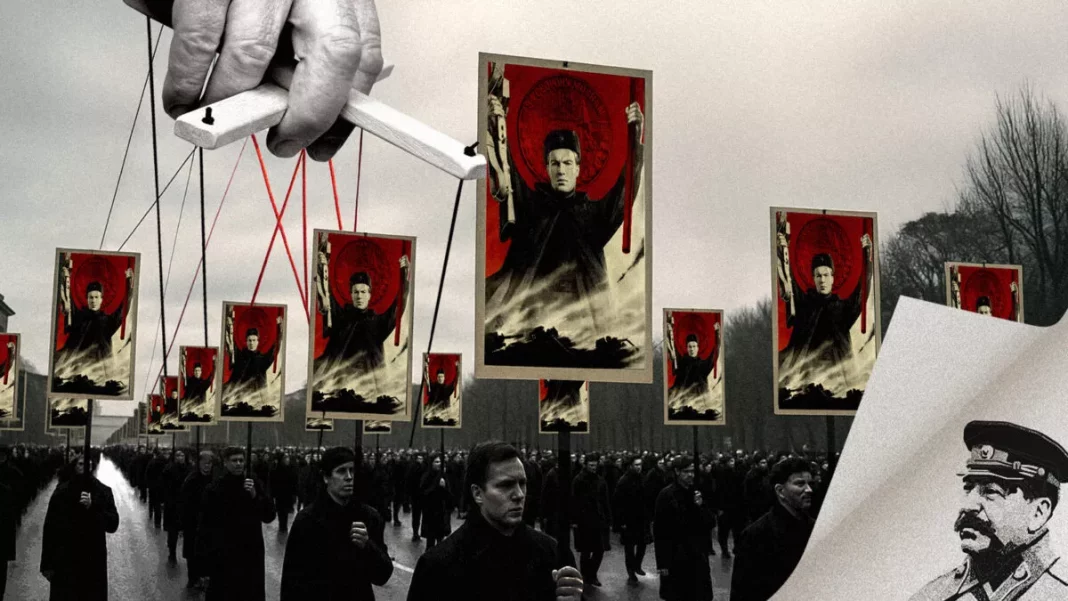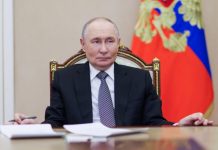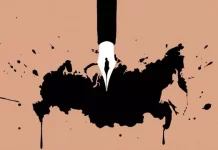By EUvsDisinfo
As 9 May approaches, Russia is preparing for its annual ‘Victory Day’ celebrations, commemorating the 80 years since the end of World War II. We are bringing you a series of articles to better prepare you. See the first, second, third and fourth articles in the series.
Central to the 9 May commemorations is the ‘Immortal Regiment’ march. Putin is expected to make ‘new heroes’ by fabricating a direct lineage from WWII to Russia’s aggression against Ukraine.
What began as a personal way to honour family members who fought in WWII has evolved into a potent symbol of state-managed patriotism and social mobilisation, its trajectory revealing much about the Kremlin’s use and manipulation of historical memory.
From grassroots memory preservation into state-run revisionism
The Immortal Regiment’s origins were grassroots, reportedly starting in Tomsk around 2012. The concept resonated deeply with people: citizens marching holding portraits of their WWII relatives. It was a powerful, personal act of remembrance as living veterans were disappearing.
Recognising its potential, the Russian state quickly embraced and co-opted the initiative. It transformed it into a massive, Kremlin-endorsed spectacle, heavily promoted by state outlets as a display of national unity and reverence for the past.
However, state adoption shifted the focus of the Immortal Regiments. The marches became less about individual memory preservation and more about driving home specific state-crafted narratives like portraying the victory over Nazism primarily as a Russian achievement and downplaying the sacrifices of other participants, particularly Ukrainians, who lost around eight million people during WWII while six million Ukrainians fought Nazism.
False memories serve mobilisation needs
The Immortal Regiment became a key tool in this effort to build a cult around the ‘great victory’. In 2018, Putin marched in front of the parade in Moscow. It provided a visually powerful way to mobilise the population, linking reverence for ancestors with loyalty to the current state and its leader.
Yet, questions about authenticity did shadow the marches’ massive scale. Numerous reports emerged over the years of students and state employees being pressured or mobilised to attend, sometimes carrying photos of strangers, merely to ensure impressive crowds for the cameras. The marches were turned into a performance orchestrated for domestic consumption, aimed at twisting shared memories and shoring up support for the regime.
Interestingly, the large-scale, in-person marches were abruptly cancelled in major cities in 2023 and 2024, officially due to obscure ‘security reasons’. Many observers suspected the real reason was sensitivity to highlighting heavy casualties from the war in Ukraine, fearing uncontrolled public displays of recent loss could disrupt the official narrative at the time.
New lies woven into old ones
However, this year marks a major shift. Large-scale marches, including the Immortal Regiment, are planned again across Russia for the 80th anniversary of the end of WWII. The resumption occurs amidst an intensified censorship and propaganda climate, detailed in our recent disinformation cases. In their false and absurd narratives, Russian state mouthpieces aggressively frame European actions and warnings related to the 2025 ‘Victory Day’ commemorations as proof of resurgent ‘European Nazism’ and hostility.
Crucially, the resumption comes with a specific, top-down directive: Putin’s administration has instructed organisers to emphasise the parallel between the ‘Special Military Operation’, or as we know it, the full-scale invasion of Ukraine, and the ‘Great Patriotic War’, the 1941-45 part of WWII in Russian revisionist parlance.
The goal this year is to blend WWII commemorations with celebrations of the ‘new generation of heroes’ from Russia’s full-scale invasion of Ukraine. The Immortal Regiment marches serve as a backdrop for fostering a sense of shared national destiny rooted in a revisionist version of past ’military glory’, encouraging the acceptance of present-day sacrifices.
In practice, this approach aims at weaving the established revisionist narratives and propaganda tropes covering WWII with justifications for the current war against Ukraine. The shift suggests that Putin feels now confident that together with his propaganda apparatus he has managed to force-feed the on-going war as a necessity to the greater Russian public. The goal of mobilising more Russians for the ongoing war in Ukraine is apparent.
The Kremlin’s appropriation of the Immortal Regiment
The redeployment of the Immortal Regiment powerfully underscores its role as a tool for social mobilisation tailored to current Kremlin needs.
It is no longer just about remembering WWII, it is about actively weaving the narrative of the current war into that historical legacy, leveraging the emotional weight associated with the ‘Great Patriotic War’ construct to rally support and assert legitimacy for present-day military actions and lives lost there.
The journey of the ‘Immortal Regiment’ from a grassroots memory preservation, into a state-managed spectacle, and to its current redeployment explicitly linking past and present wars of aggression vividly illustrates the Kremlin’s instrumentalisation of history and human memory.
It shows that Russia is willing to appropriate potent symbols, even pausing them when inconvenient, only to re-launch them with a refined message aimed squarely at mobilising support for its ongoing military objectives. The personal memory of the past generation is twisted and weaponised into fuel for the wars of the present.
Don’t be deceived.
By EUvsDisinfo





